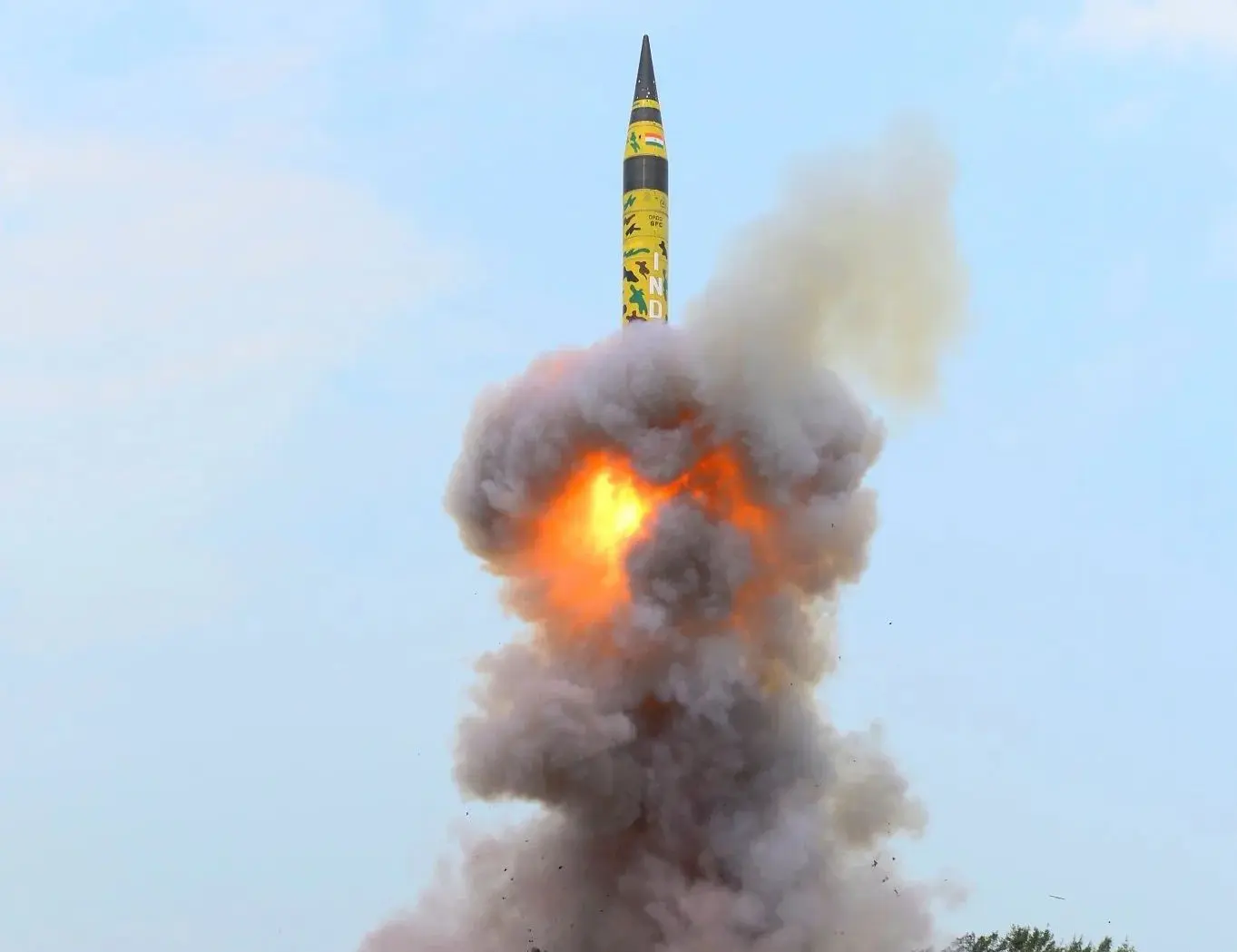
India’s DRDO is developing a powerful new variant of the Agni-5 missile, capable of carrying a massive 7,500 kg bunker-buster warhead
The Next Evolution: Agni-5’s Bunker-Busting Transformation
India’s Agni-5 intercontinental ballistic missile (ICBM) has long been a symbol of strategic deterrence. But now, the DRDO is pushing its capabilities into a new dimension. The upgraded variant under development will carry a conventional 7,500 kg bunker-buster warhead, designed to penetrate 80 to 100 meters underground before detonation.
Unlike the original Agni-5, which was nuclear-capable with a range exceeding 5,000 km, the new version will have a reduced range of 2,500 km,a trade-off to accommodate the massive payload. This shift reflects a tactical pivot: from long-range deterrence to precision deep-strike capability against hardened enemy infrastructure such as:
- Underground missile silos
- Command and control bunkers
- Reinforced storage depots
- Subterranean nuclear facilities
The missile will reportedly reach hypersonic speeds between Mach 8 and Mach 20, ensuring rapid delivery and minimal interception risk.
What Is a Bunker Buster Missile and Why It Matters
A bunker buster is a specialized munition designed to penetrate fortified underground targets before exploding. Unlike conventional warheads that detonate on impact, bunker busters use hardened casings, high mass, and delayed fuses to burrow deep into concrete or earth before triggering a powerful internal collapse.
India’s upcoming Agni-5 variant will rival the U.S. GBU-57 Massive Ordnance Penetrator, which was recently used in strikes on Iran’s Fordow nuclear site. However, while the U.S. relies on stealth bombers to deliver such payloads, India’s missile-based delivery system offers greater flexibility, speed, and cost-efficiency.
Key features of India’s bunker buster missile:
- Warhead weight: 7,500–8,000 kg
- Penetration depth: Up to 100 meters
- Guidance system: Micro inertial navigation with NavIC and GPS integration
- Delivery platform: Road-mobile, canisterized missile system
This development is not just about matching global capabilities—it’s about asserting India’s ability to neutralize deeply buried threats in hostile territories, including those in Pakistan and China.
Strategic Implications: Deterrence, Doctrine, and Deployment
The timing of this upgrade is no coincidence. Following the U.S. strikes on Iran and India’s own Operation Sindoor, which exposed the limitations of conventional airstrikes against fortified terror hideouts, the need for deep-penetration strike options has become urgent.
The Agni-5 bunker buster variant could:
- Deter adversaries from hiding critical assets underground
- Enhance India’s second-strike capability in a nuclear scenario
- Support surgical strikes without risking manned aircraft
- Strengthen India’s export potential in the global arms market
Moreover, the missile’s modular design allows for dual-use configurations, airburst warheads for surface targets and deep-penetration warheads for subterranean threats.
India’s move also signals a shift in military doctrine, from reactive defense to proactive deterrence. By developing a missile that can obliterate underground command centers, India is sending a clear message: no target is out of reach.
Conclusion:
The DRDO’s upgraded Agni-5 is more than a missile, it’s a strategic statement. With its colossal payload, hypersonic speed, and deep-strike precision, this bunker buster variant could redefine India’s military posture in the region. As global powers race to dominate the next frontier of warfare, India is making it clear: it’s not just keeping pace, it’s setting the pace
Stay updated with the latest news on Rapido Updates. Keep yourself updated with The World, India News, Entertainment, Market, Automobile, Gadgets, Sports, and many more
1 thought on “Agni-5 Reforged: India’s Devastating Bunker Buster Missile Signals Strategic Shockwave”